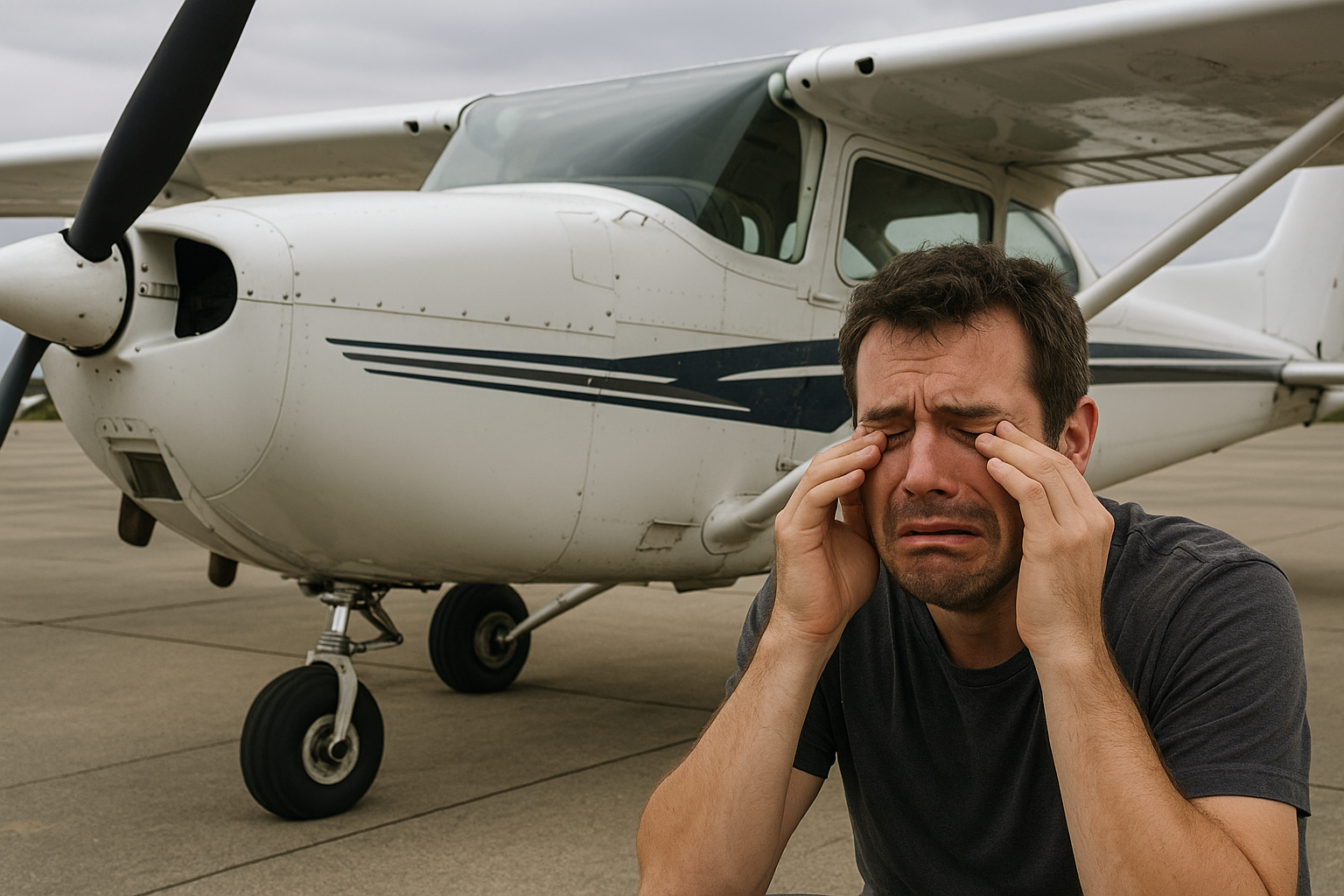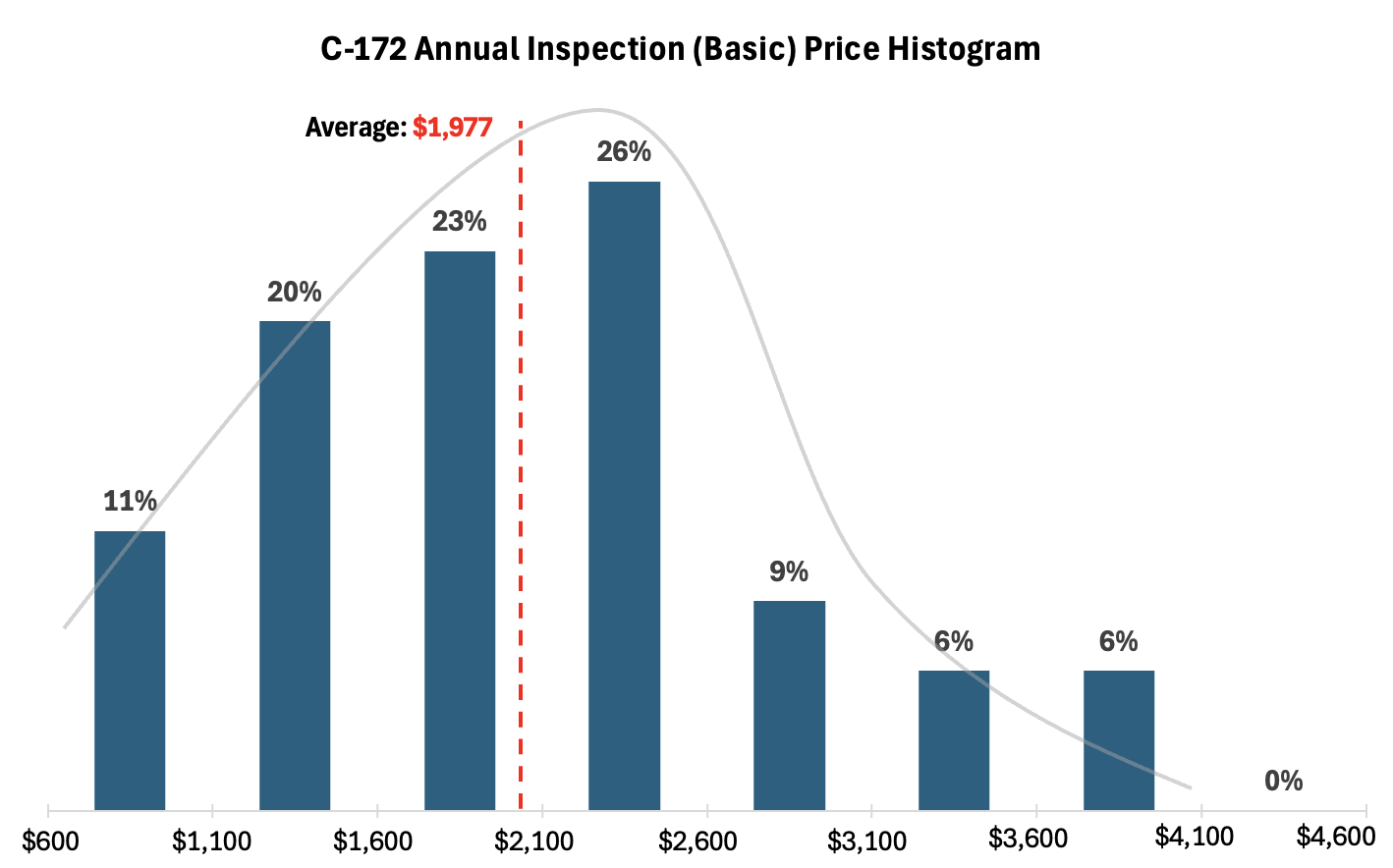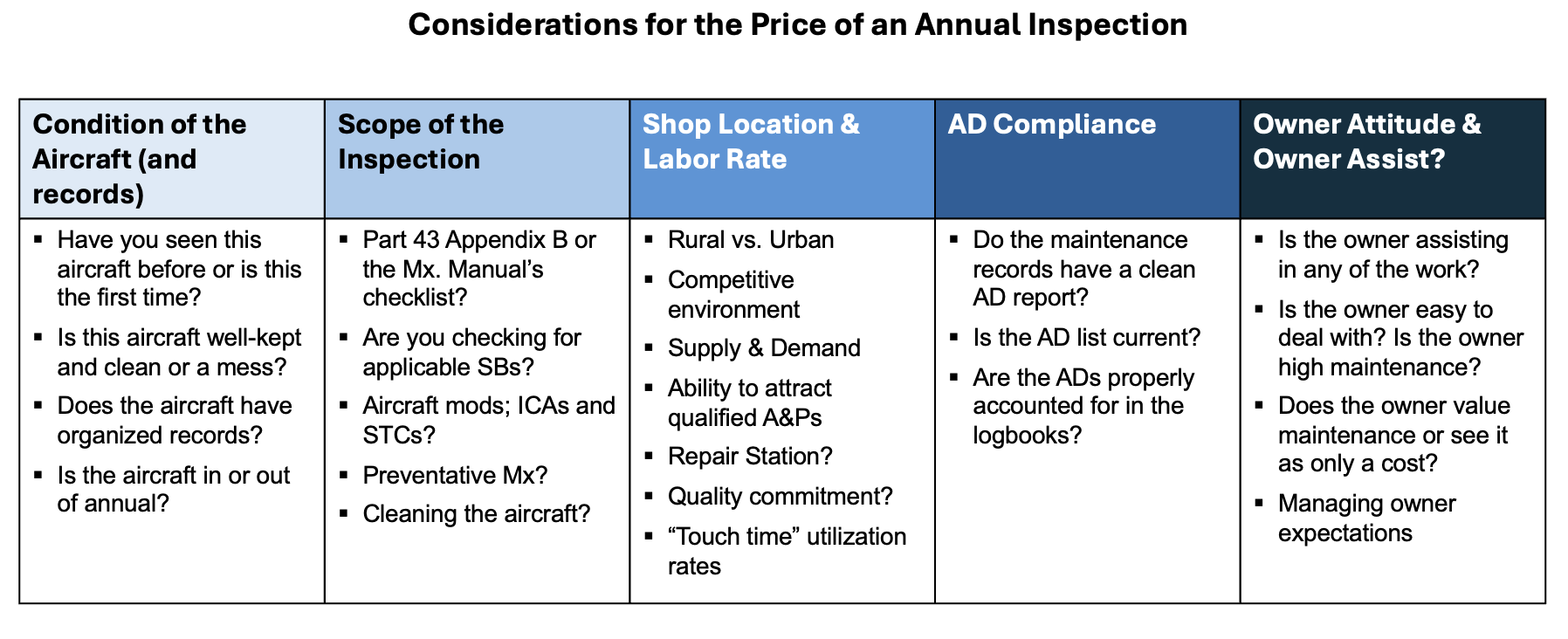
“Where is the airplane?” That’s the first thing that came out of the shop owner's mouth when I asked him what he charged for an oil change. "If you break it down into every single action, an oil change will take 4-5 hours of labor, but I can only bill two hours for it, because that's the going rate," he said.
When the conversation began to drift into the topic of the annual inspection, he began to riff on inspection items that went beyond the scope of Appendix D. He stopped and asked me a hypothetical: would I prefer the 28-year-old or the 58-year-old neurosurgeon? "They’re both doctors,” he said.
“I’ve got 40+ years doing this," he went on. "Do you want me or my new A&P hire who, by-the-way, is perfectly qualified to conduct a 100 hour? How many Cessnas are the other guys seeing? I do Cessnas all the time. I know where to look, where the brake discs are too thin, where the scratches are too deep."
"Does it have wheel pants on it? What is the condition of the interior?," he asked. "We put seat covers, paper on the wings, plastic on the props, and do all this under a 'protective' work order with infinite time. The customer doesn’t get charged for it. You know why? Because it’s cheaper to prevent a mistake than to fix it,” he said.
He brings up a good point. All of this talk got us wondering about how prices for "an annual" (in air quotes) fluctuated from shop to shop, mechanic to mechanic.
It would seem there are as many ways to do an annual inspection as there are inspectors, each with their own maintenance philosophy relating to how pure or how detailed that inspection should be.
In any case, we recently took it upon ourselves to ask some of our customers what an annual for a Cessna 172 costs at their shop. To keep things simple, we assumed a clean, 1970s model, seen for the first time, “basic” annual (inspection only) to tease out a generalized rate. Here is the summary chart on what our conversations yielded on the “inspection only” base rate for a 172:

Given the variability in scope, local area dynamics, shop attitudes, labor efficiencies, and maintenance philosophies, the range was quite large, between $800 and $3600, and somewhere in the range of 8 to 28 hours, with the average at ~$2k and somewhere around 15-16 hours as being the “sweet spot”.
As you can see, the price of a Cessna 172 depends on many factors, namely the condition of the aircraft, the scope of the inspection, the shop location and labor rates, AD compliance, owner attitudes, and expectations management.
The condition of the aircraft and its records plays a foundational role: a clean, well-maintained airplane with organized, complete logs—especially one known to the shop—generally requires less time and fewer surprises than a neglected aircraft with incomplete or disorganized documentation.
The scope of the inspection also matters significantly, notably whether the shop follows the minimum FAA Part 43 Appendix D checklist, one of ours, or the manufacturer’s maintenance manual checklist. As one IA put it, “you take a guy doing an 8-hour inspection with Part 43 Appendix D and another guy doing a 28-hour inspection using the Cessna 172 checklist, and you both did ‘an annual.’”
How detailed is the AD sheet? Is this an airplane with the dreaded "All ADs complied with" or does it have a professional AD compliance sheet in the binder (like the ones we provide here at TBX). How detailed are the compliance entries - were they pencil-whipped or actually complied with?
Are you checking for applicable Service Bulletins, Instructions for Continued Airworthiness (“ICAs”) or performing preventive maintenance? FSDOs are starting to take notice of lax ICA maintenance / sign-offs. How deep are you going into Chapter 4 items, life limited parts?

Owner attitudes matter - nobody wants to deal with cheapskates that haggle over the price of $50 parts and clearly articulated airworthy items. Managing customer expectations on what happens in an annual, whether this be through conversations, detailed reports, or holidng the line, matters tremendously, especially at the higher rates.
Even more important than location (or supply & demand dynamics) tends to be the utilization rates of A&P shop labor hours. While the best run shops will never approach 100%, let alone 90%, we tend to see “dialed-in” shops bill around 80-85% of their labor hours as “touch-time”. The factors that tend to eat away at your efficiency can be as simple as hangar size, average distance to tools, the inconsistency between aircraft types, and friction inherent in shop workflows.
This is where software (like TBX) can really have an impact, helping streamline shop operations and save time. This begins with the quadrafecta of the right parts, the right tools, the right knowhow, and the guy you need to help you all working in unison. If you are interested in learning how to maximize every “swinging minute” to be profitable time vs. burning hours, we can help you.
If you are interested in learning more about how we can help you maximize your shop efficiency, see what we offer – sign up for a 10-day free trial here.